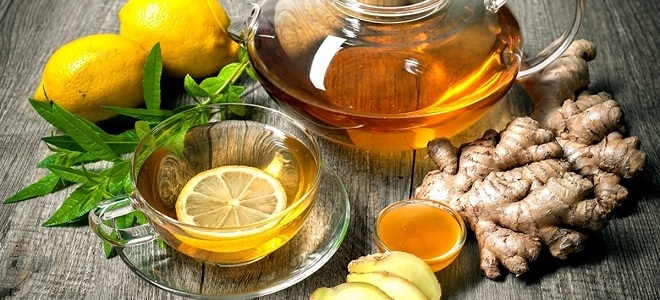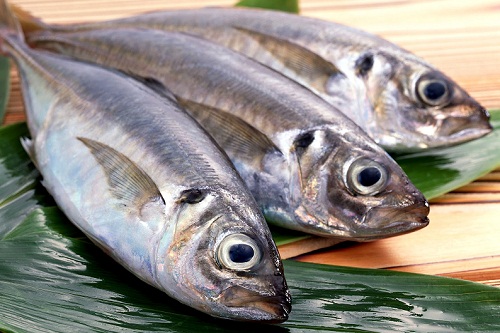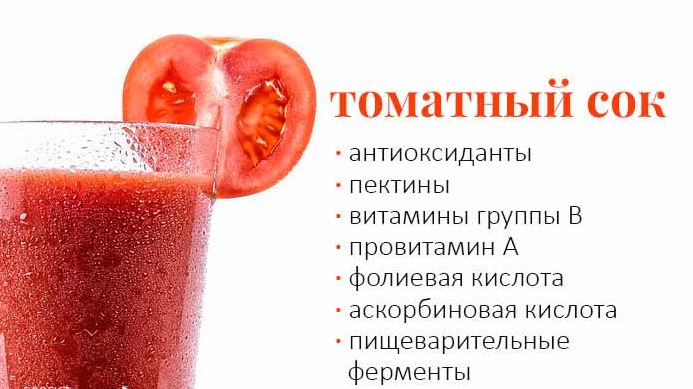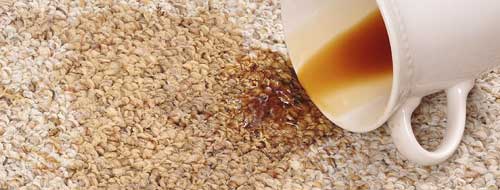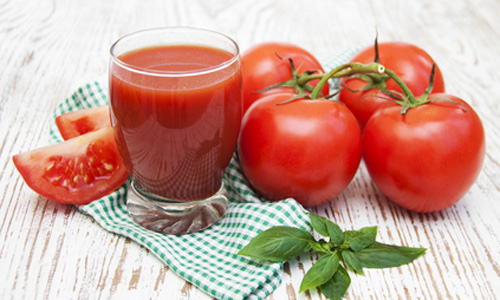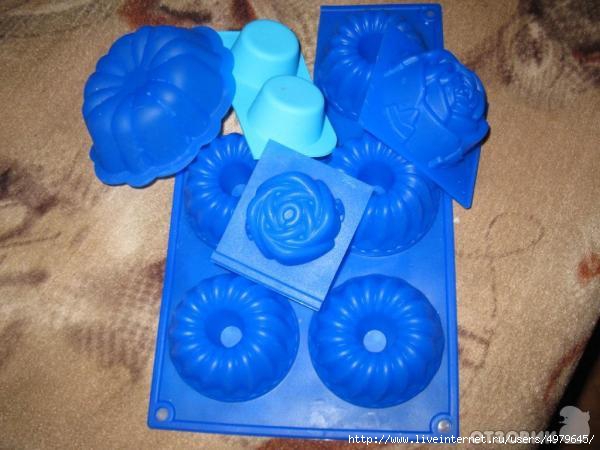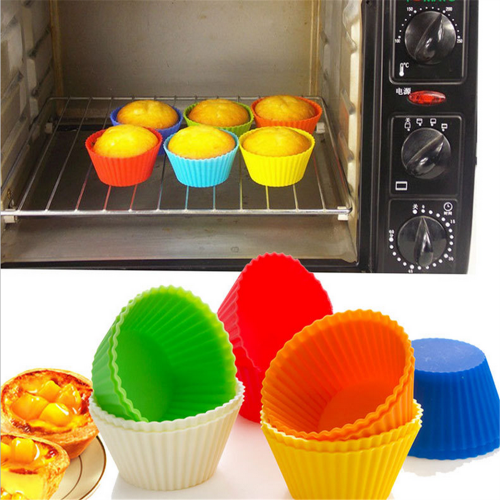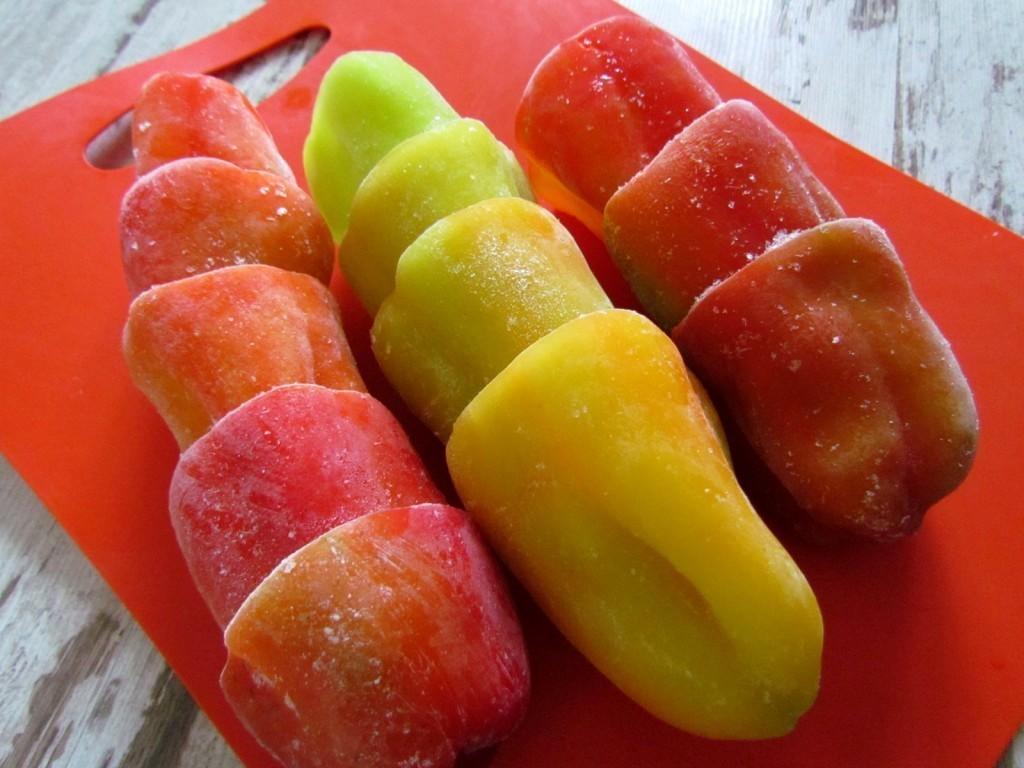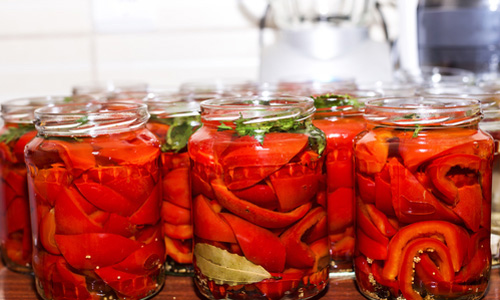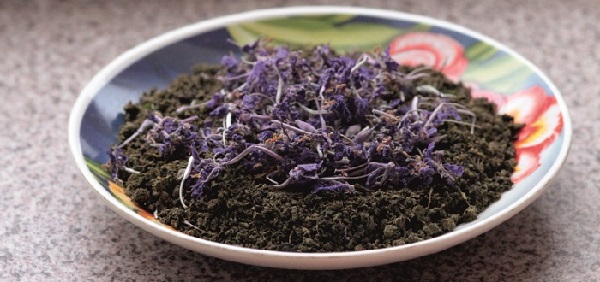Cast-iron frying pan - preparation and operation. Prepare a cast-iron frying pan or cauldron before the first use: how to do it in the oven, on the burner and in the fire
Often in economics there is a need to calcine a cast-iron frying pan. This is done for different purposes: before the very first use (many manufacturers require this), for cleaning, so that you can bake pancakes and pancakes, etc. In general, there can be many reasons. But how to carry out the procedure correctly so as not to harm either yourself or the pan, we will tell you below.
Why bake a pan
The frying pan is usually calcined in several cases. Let's look at the most frequent ones.
- After the purchase. Often on the surface of the dishes there are traces of factory lubrication, which are not very pleasant to eat. In this case, the pan is calcined to remove them.
- For the cleaning. During prolonged use of a cast-iron pan, carbon deposits form on its working surface. In fact, this is already burnt oil and fat, which are also not suitable for use in food. In this case, calcination is necessary in order to get rid of soot.
- To prepare for making pancakes. Our grandmothers also used calcined old pans for baking pancakes and pancakes. In this case, all absorbed oil is also removed from the surface, it becomes clean, dry and ideal for making treats.
So, whatever the reason, but if you need to efficiently and effectively calcine the cast-iron skillet, without damaging it in any way, we are ready to help resolve the issue. There are several ways to cope with the task.
Method one: use salt
This method is the most famous, simple and common. It does not require much effort, however, you still have to monitor the state of the pan. So, first prepare the dishes for the procedure:
- Wash the pan thoroughly with the obligatory use of detergent. Rinse so that no foam remains. Wipe the pan so that it is completely dry.
- Check: the surface should be perfectly clean, without dried up food debris or traces of burned out oil.
Now you can proceed to the calcination. Pour a centimeter layer of ordinary table salt on the bottom of the pan. Usually advised to use coarse grinding, but in fact, any will do. Naturally, it is better to take the most ordinary, cheap salt, without any additives and not iodized.
We put a filled skillet on the fire. The calcination itself lasts about 20 minutes, while you can smell an unpleasant odor. This is normal. After the process is complete, just discard the salt, it is no longer suitable for further use.
This is not the end of the procedure. At the bottom of the calcined pan, pour a small amount of refined vegetable oil and heat again for 20 minutes. Oil can be replaced with fat or fat, the effect will be the same. Now the dishes are ready for use (of course, the oil is drained, and the pan itself is washed under running water without the use of additional funds, it is simply rinsed and wiped).
Let's see why it is necessary to use salt. This substance is an excellent natural absorbent. It incorporates all the harmful residues, making the cast-iron work surface almost perfectly clean. That is why such a method of calcining a pan has been used since ancient times.
Method two: use vegetable oil
This method is much more extreme than the first. If you are careless or do not keep track of the fluid, the oil may flare up, but it is quite quick and effective. It is done like that.
We take a pre-cleaned and absolutely dry pan (there should not be any drops of water on it at all). Pour as much oil as possible. Usually, unrefined vegetable is used for such purposes, it does not give a smell. Remember that during the process of frying the pan, burning particles of food and absorbed oil, which can smell very bad, therefore, it is not worth aggravating with the pronounced smell of unrefined. However, if this does not scare you, you can use it.
We put a frying pan with oil in the fire, heat it and keep it on the stove for half an hour. After that, wash off the used liquid, wash the dishes well under running water. Everything can be used to prepare healthy and safe foods.
The third way: in the oven, without too much fuss
This method is ideal for busy people who do not want to carry out all the above manipulations. But it is not as effective as the first two.

So, first, again, prepare the dishes for the upcoming procedure:
- Wash under running water, be sure to use a special detergent;
- Take a clean cloth, saturate it with vegetable oil (but not much);
- Dry wipe the pan;
- Gently grease it with a cloth soaked in oil;
- Preheat the oven to a temperature of 180 degrees Celsius.
Everything, now you can begin to work directly. Turn the pan upside down and carefully place in the oven, which can be turned off in an hour. However, after turning off the dishes, we do not get the dishes, but leave them inside until they are completely cooled. Here is such a "lazy" way. But, as you can see, it takes much longer than the first two.
Whichever method you use to fry a pan, remember that you must always follow all the precautions. Firstly, oil is an extremely flammable substance, and if used improperly, it can easily ignite. Secondly, pouring the used liquid and pouring out the salt is best not immediately, but only after they have completely cooled down. It’s both more efficient and safer.
Cast iron is a very high-quality material that is ideal for heat treatment of food. However, it has special pores, clogging over time, and cooking on such dishes becomes not very pleasant. In addition, food can take on different flavors. To get rid of such a problem and recommend periodically baking pans. During the procedure, all past oil and food particles burn out, and the dishes again acquire all their positive qualities. That is why it is important not to forget about calcination and sometimes carry it out.
Few secrets
- Oil for a cast-iron frying pan is not only a non-stick substance, but also a kind of lubricant. If you periodically calcine dishes using this liquid, after a while nothing will burn on it.
- After such a procedure, the pan can be rinsed with cold water.
- For real cast iron, calcination is a necessary and very useful procedure. After it, the pan only gets better, it is in no case deformed or cracked. If such a nuisance occurred, you sold low-quality goods.
- And finally, if your cast iron skillet is covered with enamel, you should not calcine it. In addition, such dishes are not scared to wash in the dishwasher, you can also store food in it. By the way, it is strictly forbidden to store food in an ordinary cast-iron pan, as well as leave it wet: the dishes will deteriorate from this.
Cast iron is an excellent material for a pan. It is convenient to operate and durable. Care for your skillet and it will give you a lot of delicious dishes!
Video: preparing a cast iron pan for use
Cast iron utensils are in great demand among buyers due to their reliability and environmental friendliness. But even such durable products need special care. To extend the life of the pan, a frying pan must undergo a series of treatments before first use. This will prevent corrosion, which can lead to deterioration of dishes, simplify the cooking process, because the food will not burn due to the natural non-stick coating.
Preparatory stage
Before the first use, the pan must be washed and cleaned. The fact is that during production, sealant is applied to the dishes to prevent rust. If you immediately start cooking, the food absorbs harmful substances, as a result of which people may have health problems in the form of allergic reactions and even poisoning. Therefore, you must first get rid of the factory protective film.
To do this, wash the pan in hot water. If you wish, you can add a little dishwashing detergent or laundry soap, but this is not necessary, because after further procedures the surface will be completely disinfected. If there are traces of rust, it is recommended to remove them with a sponge or a metal scraper. After washing, the product must be wiped dry and dried, then you can proceed to calcination.
Cast iron dishes must be washed only by hand: the dishwasher must not be used. After washing, wipe the product dry, as drops of water can cause corrosion.
Calcination
The cast iron pan needs to be calcined before first use. Such a prescription can be seen on the labels and packaging of the product. The fact is that the material has a porous structure, so the pores must be completely filled with oil. Under the influence of high temperature, it will turn into a non-stick coating. If done correctly, after each use the food will not stick to the surface.
You can burn a cast-iron pan and prepare it for use at home using salt and vegetable oil. The oil should be exclusively refined (preferably olive) and odorless.You can calcine using one of the following methods.

Method 1. On the stove

Salt calcination removes factory grease
This preparation takes place in two stages. At the first stage, you need to fill the bottom of the pan with a thick layer of coarse salt and put on the stove for maximum heat. Stir the salt until it turns brown. Since this substance is a natural absorbent, it absorbs factory lubricant. On average, the procedure takes 30 minutes. After this, salt should be poured out, let the pan cool slightly, wash it under hot running water (without using detergents), dry, wipe it inside with a rag soaked in vegetable oil.
At the second stage, the dishes must be filled with vegetable oil, put on the burner on medium heat and calcined for 20 minutes. Pour out the oil, let the pan cool, then wash it and wipe it dry with a kitchen towel.
If there is no time for a long treatment, you can skip the first stage and immediately proceed to the second, but increase the calcination time to half an hour.

Method 2. On the stove and in the oven
This method is quite extreme, but it brings the best result, creating a reliable protective film. If there are doubts about the quality of the products, it is better to dwell on the first option, since in this case the dishes will repeatedly undergo sharp temperature changes. Before you begin processing, you need to unscrew the plastic handles, if any.
Since a lot of smoke will be emitted during the procedure, it is advisable to turn on the hood, open the windows and take care of personal protective equipment. It is recommended to wear a respirator so as not to breathe smoke, and gloves so as not to burn yourself.
The action algorithm is simple:
- 1. Put an empty dry frying pan on a large fire, but not the maximum.
- 2. When the metal turns gray and the smoke disappears, turn off the fire.
- 3. Pour cold water into another container and pour it into red-hot dishes.
- 4. Pour out water, wipe the surface dry.
- 5. Pour a thick layer of salt to the bottom, put the pan to maximum heat. Stir until the salt turns brown.
- 6. After half an hour, discard the salt, remove the pan from the stove, rinse with cold water, remove the remaining moisture with a paper towel or a piece of cloth.
- 7. Put the dishes on low heat for several minutes to dry.
- 8. Remove from the stove, grease the entire surface inside and out (including the lid) with vegetable oil. Apply it with a sponge, in large quantities.
- 9. Turn the pan upside down and put in the oven for 3 hours. It is necessary to calcine at a temperature of 180 degrees. Since residual oil can drain down, the bottom of the oven can be covered with foil.
Before cooking for the first time in a cast-iron frying pan, it is advisable to subject it to a similar treatment. This will harden the material and significantly increase the life of the product. If at some stage serious cracks have formed on the product, this indicates a low quality of the product, since cast iron cookware is not afraid of sudden changes in temperature.
Calcination is a mandatory procedure at the initial stage. Subsequently, a similar treatment will need to be only in case of rust. Corrosion should be removed immediately with a metal scraper, and then again create a protective layer.
To prevent such a problem in the future, it is recommended to use the following care tips:
- Grease the pan with vegetable oil after each use.
- Be sure to dry the dishes after washing so that no moisture remains. You can put it on a small fire for several minutes or dry it in the oven.
- Do not store food in cast-iron dishes, because of the high content of iron in the metal, it blackens and rust forms on the product.
- Keep cooking utensils in a dry, well-ventilated place.
- If the food is burnt, you can remove the residues by boiling for half an hour in a pan a solution of 2 tablespoons of salt and 2 tablespoons of soda. After treatment, clean the surface with a sponge or brush and wipe dry.
Aluminum is a wear-resistant, lightweight material suitable for kitchen utensils; pots, pans, and other containers for cooking are made from it. Such dishes are inexpensive, but despite the advantages of this metal, many housewives are faced with the question: what does an aluminum pan burn in?
Here we will consider all the proven methods of how to prevent burning of food on aluminum utensils so that the taste and color of the dish do not deteriorate.
Why an aluminum frying pan burns
Aluminum metal is not perfectly smooth. It has small pores that are not visible to the eye. In these micro-holes, food particles are clogged, which begin to burn.
To fix the problem, you need to clog these very pores by creating a protective film.

How to process an aluminum pan so that it does not stick
The most effective option, how to get rid of the constant sticking and burning of food to an aluminum skillet, is to calcine it. There are three ways to do this.
Method 1
If the utensil is new, then it is enough to rinse it with water first. If you have already used the dishes, first clean them with any non-abrasive product.
- Pour the vegetable, desirable cottonseed oil into a dry, clean pan so that it completely covers the bottom.
- Add 1 teaspoon of salt to the oil, dissolving it.
- Put the utensils on a slow fire and pour at least half an hour.
- Then extinguish the fire and when the oil has cooled, drain it.
Do not wash the pan, but wipe it with paper towels to remove all remaining oil. For three days, let the dishes lie in this form, it is impossible to use it during this period. During this time, a protective film forms and fixes on the metal, which closes all pores.
After 3-4 days, rinse the pan with detergent and it is ready for use.
Method 2
- Rub the pan thoroughly with any fat. If there is no fat, then you can use vegetable oil.
- On a baking sheet or wire rack, place it in the oven.
- Pour the dishes at a temperature of 120-150ºC for 40-60 minutes.
Then cool it and do not wash it for 3-4 days.
Method 3
- Pour fine salt into an aluminum skillet so that it covers the bottom with a thin layer.
- Put the utensils on the fire and heat for an hour, stirring the salt.
- Then extinguish the fire and wait for the metal to cool completely.
- As the pan cools, use a napkin or a piece of soft cloth to carefully rub the salt along the bottom, as if rubbing it into the surface.
- Then remove the salt, do not wash the pan for several days.
After that, rinse it under water and use.

Now you know what to do so that the aluminum pan does not burn. But this is not enough to prevent trouble in the future. The metal should be properly looked after, otherwise the problem will return.
How to care for an aluminum pan
- When cleaning aluminum dishes, do not use metal brushes and abrasive particles. This damages the soft metal and microcracks appear on it, scratches, which again entail the sticking of food.
- Cooking in such dishes, it is recommended to use wooden or plastic pans, spoons, spatulas.
- It is advisable to wash such dishes in warm rather than hot water.
- To make the aluminum utensils shine, rinse them at the end with a weak solution of ammonia.
- This metal is oxidized, therefore it is impossible to store strongly salted and acidic products in it.
- If the stained spots cannot be removed with a dishwashing gel, rub the contaminated area with baking soda.
An aluminum pan burns, what should I do if the problem persists? Other, more effective methods, alas, do not exist. Sometimes to achieve a persistent non-stick effect, repeat the calcination several times. Usually after this pan, in general, stops sticking and serves for many years.
for the pans! Mistress on a note!How to use and care
behind Teflon-coated pans:
How to use and care
behind cast-iron frying pans:
Before the first use, a cast-iron pan must be prepared so that the food does not stick to the bottom. Wash the pan with hot soapy water, wipe. Wipe the entire pan with a cloth dipped in vegetable oil — even the lid and the outside of the pan. Heat, turning upside down, in the oven for 1 hour at a temperature of 180 ° C. Turn off the oven and, without removing the pan, completely cool it.
Before washing, cast iron pans should be wiped with paper, and then washed with hot water and soap without a scratching sponge. When washing cast-iron pans, do not scrub or use abrasive detergents. If the remnants of food are stuck to the surface of the pan too much, heat a little water in it with dishwashing liquid or vinegar-saline and let cool for a while. Burnt food debris can also be wiped with dry salt.
Cast iron can rust from water. Therefore, after washing, the cast-iron frying pan needs to be dried quickly - wipe dry or warm on the burner for 2-3 minutes. By the way, if it is not planned to use the pan for a long time, it is better to warm it on the burner for several minutes after washing and lightly grease it with vegetable oil.
In most cases, cast iron pans cannot be washed in the dishwasher, as this can cause rust.
Rust in a cast iron skillet can be controlled with vegetable oil. It is necessary to grease the pan with oil and calcine it. To prevent rust from reappearing, lubricate the pan with oil after each wash.
Despite its severity, cast iron dishes are very fragile, and from falling can crack.
If your cast-iron frying pan is not covered with a layer of enamel, then leaving cooked food in it is not recommended - otherwise the food may turn black.
How to use and care
behind stainless steel pans:
It is known that stainless steel cookware It is quite durable in itself, but, despite this, it will not hinder good care. To your stainless steel always remained new, it is necessary to follow some recommendations. To begin with, you need to learn that stainless steel dishes cannot be washed with abrasive cleaners. This may cause the glossy surface of the dishes to be scratched and soon to fade. Almost every store that sells such dishes, also offers a lot of special detergents for washing dishes from stainless steel, as well as special sponges for it. When using such tools (quite inexpensive, by the way), you can significantly extend the life and maintain the "presentation" of the stainless steel.
It should also be remembered that if wiped dry after washing stainless steel cookware, especially if the dishes are decorated with inserts from other metals (for example, copper), then this will also extend its existence. Thus, it is possible to prevent the possible appearance of dark spots on the dishes.
Dear hostesses, if you decide to replenish your assortment of kitchen utensils with modern novelties that are more convenient to use. Wikimart is a huge assortment, excellent quality and the lowest prices. Hurry to purchase the necessary goods at low prices and receive a gift for this. The collapse in prices, promotions and gifts to its customers is offered by the online shopping center Wikimart.
Each housewife tries to simplify the cooking process with the help of modern household appliances and quality dishes. Today, there is a huge demand for cast iron pans, as this material has so many advantages. But after buying a new frying pan, do not immediately take up the preparation of dishes, as it is necessary to perform a few simple steps that will extend the life of the dishes and prevent many problems in the future. In this article we will consider what to do with a new pan and how to achieve its non-stickness.
Aluminum pan
Dishes made of aluminum or steel do not require complex manipulations after purchase:
- Fill the new, just washed dishes, about half with liquid and add a slice of lemon.
- We carry out the boiling process for 20 minutes, in which hot steam will destroy all pathogenic microbes and harmful bacteria, and the presence of lemon will eliminate the unpleasant odors that are present when buying new dishes.
Method number 1
The process of calcining a new aluminum pan with elements of coarse salt is popular:
- A new aluminum skillet must be washed with a detergent, wiped dry and put on a gas stove.
- Cover the bottom of the aluminum pan with coarse salt.
- About 20 minutes you need to hold the pan over low heat.
Important! Sometimes this process is accompanied by an unpleasant odor - for aluminum utensils this is quite normal.
- After the set period of time, turn off the stove and allow the salt to cool.
- Discard the salt, and wipe the bottom of the aluminum pan with a cloth that is dipped in vegetable oil. For this purpose, the use of refined oil is ideal.
- About 20 minutes you need to hold the pan over low heat, then wash, but already without detergent.
Method number 2
The second method is almost similar to the first method, only in this case, no kitchen salt is used. The calcination process is accompanied only by oil. It must be poured a little more, and for 40 minutes on a low fire, perform the calcination procedure.
Method number 3
What to do with a new pan if there is very little time? In this case, the third method will come to the rescue. With this method, it is quite enough:
- Wash the aluminum pan.
- Wipe dry and wipe with a cloth that is moistened with vegetable oil.
- Then put the dishes in the oven upside down and turn on the temperature by 180 degrees. Aluminum dishes must be left in the oven for an hour. After a set period of time, turn off the oven and allow the pan to cool right there.
Steel pan
To prevent burning, you can use these recommendations:
- You can use a hot pan and cold oil. The best way to prevent food burning is to heat a steel pan. Preheat the dishes over low heat, pour vegetable or butter into it right before possible cooking.
- It is necessary to adjust the cooking temperature. The use of too high temperature is guaranteed to lead to burning food. The mode of strong fire on the stove is used only when boiling water and the deep frying process. In order to avoid the process of burning and burning used products, it is necessary to reduce the temperature of cooking.
- It is necessary to warm dishes before the cooking process. Applying cold food in a hot pan will cause it to stick. To avoid this problem, you need food that was taken out of the refrigerator, allowed to take room temperature, but you do not need to leave it for a long time.
- When cooking, do not overfill the pan. If you put too much food, then there is a mess in the temperature regime of the steel pan, which contributes to sticking and sticking. Food in this case is cooked unevenly.
- Do not use non-stick and cooking sprays. The use of such funds creates more problems with adhesion and does not contribute to their solution. The edges of the pan, where the spray does not burn out, are especially affected.
Important! If the purchased pan has a non-stick coating, then it is necessary to maintain it in good condition. Do not use metal tools to clean the surface of the pan, do not wash dishes with abrasive materials, such as a hard metal sponge, and do not cook on very high heat.
To extend the life of the steel pan, you need to remember a few simple rules:
- Some potent detergents can damage pans. This is especially true for those detergents that are used for dishwashers, as they wash all the oil and dry it.
- During the calcination process, the property of pores in the metal is used. They are filled with polymerized oils and fats, which create a non-stick coating. Stainless steel is practically devoid of pores, which is why it is so well preserved after a long period of time.
Cast iron pan - advantages and features of the preparation
Cast iron is considered the best material for the manufacture of kitchen utensils, because it is environmentally friendly, durable, reliable and can serve a very long period of time.
Cast-iron pans have a number of advantages, compared with ultramodern non-stick products:
- Cast iron is the oldest alloy that is used to make kitchen utensils. This material does not contain unnecessary chemical impurities, and is also absolutely non-toxic during heating.
- It conducts heat poorly, but retains it excellently, so before use, such a frying pan must be properly calcined.
- A cast-iron frying pan evenly gives off heat to the products, so they do not burn, do not lose juices and acquire a unique taste.
- These products do a great job with long languishing.
- The cast-iron surface is absolutely neutral to food acid products.
- Suitable for all types of stoves and ovens.
- Cast iron is very durable and does not lend itself to deformation, so such cookware lasts a very long time.
- It is easy to restore the original appearance, as well as non-stick properties.
- The surface is not susceptible to mechanical damage, so you can use any device in the process of stirring dishes.
- A cast iron grill pan with a raised bottom makes it possible to prepare dishes with virtually no fat.
All these advantages can be appreciated if you know what to do with a new cast-iron frying pan?
Important! Also, this type of cookware has a number of disadvantages:
- huge weight;
- ability to rust, therefore it is necessary to periodically carry out preventive procedures;
- it is impossible to store food in it;
- necessary special, but simple care;
- may fall if dropped.

Rules for the care and use of a non-stick cast iron pan
How to make a cast-iron pan non-stick and save these properties? For a cast-iron frying pan, the rules for maintenance and operation are not as strict as for Teflon or ceramic models, but nevertheless, there are certain tips:
- It is only necessary to buy kitchen utensils of high quality and from well-known manufacturers, since the operational life of the product directly depends on this.
Important! The lack of surface gloss and uneven heating of the pan indicates a poor model.
- Use wooden spatulas in the cooking process, as this will help maintain a smooth surface.
- Do not leave the cast-iron pan on fire without water or food, as this will damage the non-stick coating and reduce the life of the product.
- Wait for the pan to cool, and not cool it under a stream of cold water. That is why washing a cast-iron product is necessary only after it has completely cooled down.
- Cookware must be washed after each use. After the cooking process, soot and burnt oil remain in the pan, which damage the surface. If you do not wash the product, then in such places the food will burn, which will cause certain difficulties when washing dishes.
- The washing process must be carried out under hot water, and hotter water contributes to a better and more efficient removal of excess fat.
- If you cannot get rid of dirt with a regular dishwashing sponge, then you can use scrapers and metal brushes, you just need to be very careful and not damage the surface of the pan.
- It is undesirable to use chemical solvents of fat, since they destroy the created non-stick layer. That is why after applying the fat-dissolving agent, it may be necessary to re-harden the cast-iron frying pan.
- The washed product must be completely dried, and then grease the inner surface with a piece of margarine or fat.
Important! This procedure is mandatory because a greasy film prevents oxidation of the surface and helps preserve the non-stick properties of the pan.
- Storing clean cookware is best done in the oven, as it has the lowest humidity level.
You can find more tips on the proper use of cookware made from this material in our separate review ““.
Renewal of non-stick properties
If the cast-iron pan was covered with a layer of soot, lost its non-stick properties and the food began to stick, then it is necessary to restore the original state of the kitchen utensils. How to make a cast-iron pan non-stick again? This procedure differs from the preparation of a new pan by prolonged baking.
To resume the non-stick properties of the cast-iron pan, you must:
- Preheat the oven to the highest possible temperature.
- Place an old skillet in it.
- Wait a few hours until all the husks begin to fall away from the pan.
- Pull out the dishes and allow them to cool completely.
- Perform the procedure of calcining a cast-iron pan to acquire non-stick properties.
If the pan burns
Food that has stuck should be soaked in water and then removed with a sponge. In severe cases, you can use a solution of laundry soap. When using a strong dishwashing detergent or metal scraper, you must again apply a non-stick layer.
Important! The frequent use of a cast-iron pan increases the quality of cooking. They do not stick, and the crust becomes more crispy.
What if the cast-iron pan starts to rust?
If there are signs of corrosion on the surface of a cast-iron pan, you need to think about updating the non-stick layer:
- First you need to remove the rusty areas with a sponge. You can also use sandpaper if the use of an ordinary kitchen sponge does not bring the desired result.
- After that, calcine the cast-iron pan, as before the first use, soak it with fat.
Important! In order not to so often wash off the non-stick coating, it is very convenient to have several pans on which you can separately prepare pancakes, fry fish and meat, stew vegetables, cook fried eggs or scrambled eggs.
How to clean a cast-iron pan from perennial soot?
Many families inherit kitchen utensils. Such dishes, which have been used by several generations, hold dear memories of ancestors, about family traditions and holidays, about the tastes of your favorite dishes. Such kitchen utensils require a new life.
And there are times when the pan is not quite old, but simply often used and there is no time to wash it. Carrying out the procedure for cleaning cast iron utensils is not difficult at all.
Perennial soot on cast iron utensils can be removed in several ways:
- The cast-iron skillet may be subject to the calcination procedure in the oven or a gas burner may be used. After five to six hours, soot easily falls off from the touch of a sharp object.
- You can apply a mechanical effect on the burnt layer of a cast-iron skillet. A metal brush, grinder or drill with a nozzle made of metal can solve this problem.
- For cast iron cookware, you can also use chemical solutions that can soften the hardened fat layer.
Important! It is best to carry out these procedures not in a closed apartment, but in an open area, since all methods are accompanied by certain difficulties:
- The first method is characterized by prolonged emission of caustic, harmful smoke.
- The second method is accompanied by uncontrolled spraying of pieces of soot that fly into all the cracks, so you need to protect your eyes and nose.
- The third method is characterized by the process of boiling chemical solutions, which are accompanied by the release of harmful fumes. Even when working outdoors, do not neglect personal protective equipment, such as glasses, gloves and a respirator.
Carbon Removal Chemical Solution
Consider the chemical composition of the solution, which is able to soften carbon deposits. To prepare it, you will need an ordinary bar of laundry soap, 200 ml of silicate glue and 500 g of baking soda. How to act:
- A grated piece of laundry soap is added to a bucket of water, in which a cast-iron frying pan will be soaked, and mixed with clerical glue and baking soda.
Important! This composition of the substance can also be used to clean delicate dishes. Cups, plates, spoons, forks, knives, pans are perfectly exposed to the cleaning procedure with this composition. However, there are restrictions for Teflon-coated cookware.
- We produce heating of a chemical solution.
- Stir until the soap completely dissolves, and then lower the cast-iron utensils into the solution.
- The further process consists in heating to a boil, after which we turn off the fire and “cook” cast-iron utensils for 3-4 hours, while not forgetting to constantly add water.
Important! If such procedures are carried out in the kitchen of the apartment, then you must definitely turn on the hood and make sure that all the windows in the apartment are open.
- After four hours, you need to check the condition of the burnt-out layer of the pan - it should become very soft, and now it can be very easily scraped off with a sharp knife or scraper. If the carbon layer is not soft enough, then you need to increase the time of “cooking” cast-iron utensils.
- When there was a complete softening of the soot, it is necessary to scrape it off the cast-iron pan and rinse the dishes thoroughly.
Important! After that, you need to boil the cookware for about 30 minutes in clean water until the soap solution disappears completely and, at the end of the cleaning process, calcine and grease, as when you started operation. Now you can again use the cast-iron pan.
Annealing a new pan
All cast iron products at manufacturing plants are treated with sealant, since this procedure helps to avoid the formation of unpleasant rust on the surface of kitchen utensils. That is why after the acquisition of such dishes, you should not immediately use it for cooking.
So what to do with the new pan?
The cast-iron pan must be washed with ordinary detergent in warm water, and then placed in the oven to dry, and the temperature should not exceed 200 degrees.
Important! Since the surface of cast iron has a porous structure, the holes must be filled with grease. After that, it will become smooth and even, like Teflon or ceramic, respectively - will receive a non-stick coating. There are several ways to do this.
Sunflower oil
The most common is the method using sunflower oil.
How to make a pan non-stick:
- Heat the dishes a little.
- Lubricate the pan on both sides with a thin layer of sunflower oil.
Important! In the future, it will not be necessary to lubricate the outer part of the pan, since this is done only before the first use to provide a non-stick coating.
- Place the product in the oven upside down and wait until the smoke disappears.
Important! If the handle of the pan is made of plastic, it is strictly forbidden to place such a product in the oven, since the plastic is very easy to melt.
- Get out the pan.
- Lubricate again with sunflower oil and wait until it cools completely.
After these procedures, the new pan takes on a shiny appearance, heats evenly, and is easy to clean.
Important! To create a smoother and denser non-stick surface, it is recommended to use solid animal fats, lard. After such processing, dishes should be washed in hot water only by hand, and try to avoid aggressive detergents.
Salt
Salt can also be used to calcine a new pan. This method appeared a long time ago, but is still very popular and is characterized by high reliability.
In order to make the surface non-stick, you must:
- Heat the pan.
- Pour salt onto the surface.
- Anneal the pan for 20 minutes, constantly stirring the salt.
- Pour salt out of the dishes.
- Rinse the pan under warm water and dry.
Proper use of different types of pans
All kinds of pans are used for the cooking process of various dishes. Using the right type of pan helps to maintain the dishes in excellent condition, so you need to clearly understand which pan is intended for what:
- A stainless steel pan is ideal for making sauces, gravy and other liquid dishes. They can also be used to make acidic foods. But the dishes with non-stick coating will begin to react with elements of acidic substances, and as a result, surface damage occurs.
- Non-stick pans must be used for frying eggs and other foods that may burn.

